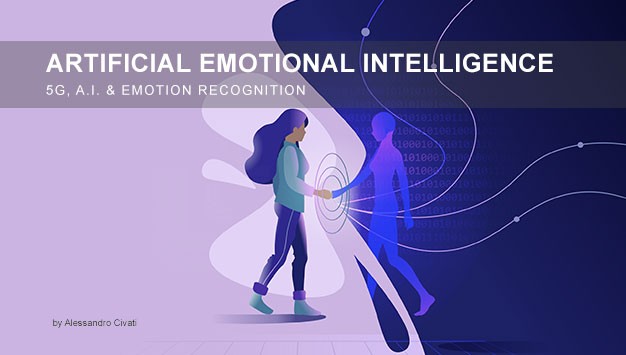With 5G communication technology’s continued rollout, we’ll soon be ushered into a new era as 5G is integrated with A.I. The combination of 5G and A.I. is expected to transform the world as we know it in industry, business, and personal levels. 5G is designed to deliver higher multi-Gbps peak data speeds, increased reliability, ultra-low latency, massive network capacity, consistent user experiences, and increased availability.
The new dawn will be characterized by the enhanced connection between people, machines, devices, and objects due to the higher performance and greater efficiency. Other notable features of the new era are smart services and facilities, including intelligent healthcare, self-driving cars, and smart UAVs. Technological evolution is underway without a doubt with 5G technology, with the most defining capability being forward compatibility which will undoubtedly support future services. The high speeds, ultra-low latency to allow accurate time control of advanced systems, massive possibilities, and enhanced connectivity will enable new-generation services, applications, and business opportunities.
5G will facilitate fast and efficient connectivity by applying A.I. to massive amounts of data at scale. One area of A.I. application is smart security through machine vision and emotion recognition to keep facilities and communities secure. A.I. will help in the automatic recognition of potential threats and their prevention. 5G will support A.I. inference at the edge and refine A.I. models and systems. It should be noted that they are challenges encountered with any technological revolution. Besides helping widespread use of A.I., the security of 5G-enabled systems can be compromised using the same A.I. technology. All vulnerabilities must be researched to forestall potential security incidences by creating concrete countermeasures. An intelligent world cannot be realized without addressing security challenges with both 5G and A.I. technologies.
Researchers at the Incheon National University in South Korea address the issues associated with an AI-based, 5G-integrated virtual emotion recognition system referred to as 5G-I-VEmoSYS. The 5G-I-VEmoSYS is used to detect human emotions through the use of body movements and wireless signals. The findings of the study led by Prof. Hyunbum Kim have been published in IEEE Network.
Emotions are a critical human characteristic that helps to differentiate human beings from machines. Emotions will typically define everyday human activity. However, some emotions are not exactly helpful and can disrupt society’s day-to-day workings and place people’s lives in harm’s way. For example, an unstable driver on the road is a significant threat to other road users’ lives and well-being. The emergence and use of emotion detection technology have immense potential for identifying and recognizing disruptive emotions and warning relevant people of the potential danger. The emotion detection technology can be used with 5G and even beyond 5G communication.
According to Prof. Kim, an A.I.-enabled driver system of a car can alert pedestrians and other road users about impending danger in the case of an unstable driver. The system will use the nearest network towers to alert pedestrians and other drivers closest to their devices’ imminent threat.
5G-I-VEmoSYS can recognize five different kinds of emotion, including joy, anger, pleasure, sadness, and a neutral state. The system’s architecture is three subsystems that will deal with the detection, flow, and mapping of human emotions.
- One system, the Artificial Intelligence Virtual Emotion Barrier or AI-VEmoBAR, serves the role of detection by relying on the reflection of wireless signals from human beings to detect their emotions.
- The second system is the Artificial Intelligence Virtual Emotion Flow, or AI-VEmoFLOW will receive the emotion information and facilitate the flow of specific emotion information at specified times and particular areas.
- Lastly, the Artificial Intelligence Virtual Emotion Map or AI-VEmoMAP will use large amounts of the virtual emotion data to create a virtual emotion map that will help threat detection and crime prevention.
Overall, the most significant advantage of the 5G-I-VEmoSYS is that it can complete emotion detection without revealing the face or other private elements of the subjects. The system can protect the privacy of citizens, primarily in public areas. In private spaces, the 5G-I-VEmoSYS allows users to choose to remain anonymous or reveal their identity when providing their information to the system. Despite the whole privacy issue, the system will immediately convey information to the relevant authorities to detect profound emotions such as fear and anger. The police department or other authority will take the necessary steps to prevent crime or other threats such as terrorism.
Both technologies – A.I. and 5G – have susceptibility to security challenges just like any other technology. The same issues will affect the 5G-I-VEmoSYS, including abuse of anonymity, illegal signal tampering, and even hacker-related cybersecurity threats. Furthermore, there’s always the risk of the system sending out false alarms to the authorities.
However, the security challenges should not prevent the deployment and use of the system or lead to questioning its reliability. According to Prof. Kim, the team is confident that the security challenges can be addressed further. Increased research in the future will help tighten the loose ends by creating robust AI-based algorithms to detect malfunctioning and compromised devices and ensure information integrity. There’s a need to have robust systems that offer protection against potential system hacks as the widespread use of A.I. technology takes root. These measures will assure people and organizations that they can enjoy safer and convenient lifestyles in the advanced smart cities soon.

Author: Alessandro Civati
Email: author.ac@bitstone.net
Blockchain ID: https://lrx.is/LlVGjQ5bYP






